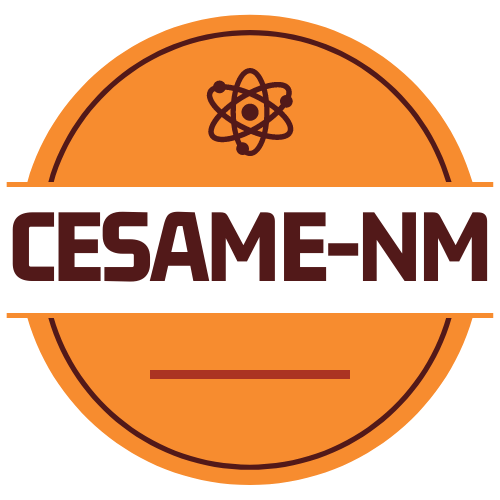The landscape of content creation is undergoing a remarkable transformation, driven by advancements in artificial intelligence and sophisticated chatbot technologies. These tools are revolutionising how businesses approach content development, offering unprecedented efficiency whilst maintaining quality. As organisations seek to streamline their marketing efforts, AI-powered writing assistants have emerged as valuable allies for content creators across industries.
The evolution of content creation tools
From manual writing to automated assistance
Content creation has traversed a long journey from traditional pen-and-paper methods to sophisticated digital solutions. In recent years, the introduction of AI writing assistants like Chat GPT has marked a significant milestone in this evolution. These advanced tools represent a paradigm shift from basic spell-checkers to comprehensive writing partners capable of generating complete drafts based on simple prompts. The development of platforms such as Nation AI, which leverages OpenAI's GPT-3 and GPT-4 models, exemplifies how accessible these technologies have become, offering free usage without requiring account creation.
How modern chatbots transform the creative process
Modern AI chatbots have evolved beyond their initial role as customer service tools to become powerful content creation engines. With the global generative AI market projected to reach £667 billion by 2030, these systems are transforming how content is conceptualised and produced. Companies like Botnation AI, which develops Nation AI, are expanding their offerings to include not just text generation but also code creation and image production from text prompts. This multi-functional approach allows content creators to address various aspects of their work through a single technological interface, significantly streamlining the creative process.
Boosting productivity with ai writing assistants
Overcoming writer's block and creative barriers
AI writing assistants have become invaluable tools for conquering the dreaded writer's block. Studies show that 86% of marketers report saving over an hour daily on creative ideation when using AI tools. These platforms can generate fresh perspectives, suggest alternative approaches, and provide inspiration when creativity runs dry. By offering instant suggestions and variations, AI chatbots help maintain creative momentum and ensure deadlines are met without sacrificing quality. The ability to quickly generate multiple content angles also enables more experimental approaches that might otherwise be too time-consuming to explore.
Streamlining research and content planning
Research and planning typically consume a substantial portion of content creation time. AI chatbots excel at automating these processes, allowing for rapid data analysis and information gathering. With AI assistance, content teams can test 3.7 times more content variations compared to traditional methods. Tools like Nation AI can efficiently sift through vast amounts of information to identify relevant sources, extract key insights, and even suggest content structures. This capability is particularly valuable for organisations dealing with complex topics or industries requiring extensive background research before content development can begin.
Enhancing content quality and consistency
Maintaining brand voice across multiple channels
Maintaining a consistent brand voice across diverse content channels presents a significant challenge for growing organisations. AI writing assistants address this by learning and replicating specific tones, styles, and messaging approaches. With 63% of organisations now using or piloting AI-powered personalisation, these tools ensure brand consistency whilst enabling content personalisation at scale. This is particularly relevant for businesses expanding their content operations across multiple platforms, where maintaining a unified voice is essential for brand recognition and trust building.
Grammar and style improvements through ai
Beyond generating content, AI chatbots excel at refining existing materials through advanced grammar and style analysis. These tools can identify subtle language issues, suggest more engaging phrasing, and ensure readability across different audience segments. However, the human touch remains crucial, as evidenced by 86% of marketers reporting they spend time editing AI-generated content. This collaborative approach combines AI efficiency with human discernment, resulting in polished content that maintains authenticity whilst benefiting from technological precision.
Cost-Effectiveness of AI Chatbots in Content Marketing
Reducing production time and resource allocation
The financial benefits of implementing AI writing tools are becoming increasingly clear. Organisations report that content production costs have decreased by an average of 42% when utilising AI assistants. Furthermore, these tools reduce time spent on basic content creation by approximately 59%, allowing team members to focus on higher-value strategic tasks. For SmartBug Media clients, AI implementation has delivered impressive results, with one healthcare client seeing patient engagement increase by 139% and referrals by 123% after deploying AI solutions.
Scaling content operations without expanding teams
One of the most compelling advantages of AI chatbots is their ability to help businesses scale content production without proportionally increasing team size. With content output increasing by an average of 77% when using AI tools, organisations can meet growing content demands whilst maintaining operational efficiency. This scalability is particularly valuable in competitive markets where content volume and frequency directly impact audience engagement and search visibility. Companies using HubSpot services integrated with AI capabilities have reported significant improvements in lead generation and conversion rates, with one higher education client achieving a 35% lead conversion rate after implementation.
Future trends in ai-assisted content creation
The rise of multimodal content generation
The future of AI-assisted content creation is increasingly multimodal, with approximately 40% of content creators already using tools that span different media formats. Advanced chatbots now offer the ability to generate not only text but also supporting visual elements, code snippets, and interactive components. Nation AI, for example, provides image generation capabilities alongside its text creation functions. This integrated approach allows for more comprehensive content packages that engage audiences through multiple sensory channels, increasing overall effectiveness and engagement metrics.
Balancing human creativity with ai efficiency
As AI writing tools become more sophisticated, the focus is shifting toward finding the optimal balance between technological efficiency and human creativity. The statistics speak for themselves: human-written content generates 5.44 times more traffic and achieves 41% longer session durations compared to purely AI-generated material. SmartBug Media emphasises this balance, advocating for an approach that blends AI capabilities with human ingenuity. The most successful content strategies leverage AI for research, structure, and initial drafting whilst relying on human expertise for emotional resonance, contextual understanding, and strategic decision-making.
Leveraging ai chatbots for personalised customer experiences
AI-powered chatbots have transformed from basic customer service tools into sophisticated content creation engines that deliver highly personalised experiences. With the global generative AI market projected to reach £667 billion by 2030, businesses across sectors are rapidly adopting these technologies. Modern chatbots like Nation AI, which utilises GPT-3 and GPT-4 models, exemplify this evolution by offering text creation, code generation, and even image production capabilities—all without requiring user accounts.
Creating tailored interactions through crm integration
The integration of chatbots with Customer Relationship Management (CRM) systems marks a significant advancement in personalisation. When connected with platforms like HubSpot, chatbots can access customer data to deliver truly tailored interactions. This integration enables chatbots to centralise teams and tools whilst managing backend operations efficiently. The combination of AI chatbots with CRM systems has shown remarkable results in data management—manufacturing businesses implementing HubSpot CRM integration have cut data management time by 5%, whilst higher education institutions have seen enrollment increases between 252-418% in just three months with custom API integrations.
AI chatbots excel at processing large datasets to create personalised content at scale. These systems track interactions, collect data, learn from exchanges, and continuously refine their responses. About 63% of organisations are now using or piloting AI-powered personalisation, recognising its value in creating bespoke customer journeys. The marketing teams leveraging these technologies test 3.7 times more content variations, dramatically improving their ability to deliver relevant content to each customer segment.
Case studies: successful implementation in e-commerce
E-commerce has seen particularly impressive results from chatbot implementation. Businesses using AI-powered chatbots for personalised product descriptions report significant improvements in customer engagement and sales conversion. Commerce Hub tools integrated with AI chatbots enable comprehensive revenue management whilst providing round-the-clock customer service—a crucial factor for global e-commerce operations.
Real-world results speak volumes: LATAM Airlines experienced a 90% reduction in response times and successfully resolved 80% of customer inquiries without human intervention after implementing AI chatbots. Similarly, Photobucket saw a 3% increase in customer satisfaction scores and improved first resolution time by 17%. Tesco has witnessed a 43% rise in self-service since 2020, demonstrating the growing customer comfort with chatbot interactions.
The efficiency gains are equally impressive—AI reduces time spent on basic content creation by an average of 59%, whilst content production costs have decreased by 42%. Despite these advantages, businesses recognise the importance of human oversight, with 86% of marketers using AI still dedicating time to editing the generated content, ensuring the perfect blend of efficiency and quality that modern customers expect.
Implementing Chatbots for Marketing Automation and Lead Generation
Marketing automation and lead generation have been revolutionised by AI-powered chatbots, offering businesses new ways to engage with prospects and streamline their marketing efforts. These intelligent conversational tools have evolved from simple customer service interfaces to sophisticated content creation engines, with the global generative AI market projected to reach £667 billion by 2030. With over 77% of businesses actively investing in AI-driven content creation tools, chatbots have become essential for companies looking to enhance their marketing strategies.
Integrating AI Chatbots with HubSpot Services for Enhanced Results
The integration of AI chatbots with HubSpot services creates a powerful combination for marketing automation and customer relationship management. SmartBug Media offers comprehensive HubSpot services that leverage AI capabilities across various hubs, including Marketing Hub for AI-driven lead generation, Sales Hub for pipeline building, and Service Hub for customer satisfaction. When chatbots are integrated with these services, businesses can centralise their teams and tools while using AI to enhance their marketing efforts.
The data shows that marketing teams using AI test 3.7 times more content variations, enabling more effective campaigns. These AI-powered tools work with HubSpot's CRM to synchronise customer data, allowing for personalised interactions at scale. For instance, in the manufacturing sector, HubSpot CRM integration with AI capabilities has cut data management time by 5%, whilst higher education institutions have seen enrollment increases of 252-418% in just three months with 35% lead conversion rates through custom API solutions.
Nation AI, which utilises OpenAI's GPT-3, GPT-3.5, and GPT-4 models, can be integrated with HubSpot to create chatbots that answer questions, create text, and generate code without requiring users to create accounts. This accessibility makes it an attractive option for businesses looking to implement AI solutions quickly.
Smartbug media's approach to ai-powered lead qualification
SmartBug Media has developed a distinctive approach to AI-powered lead qualification that combines technological innovation with human expertise. Their Breeze AI Onboarding service offers AI solutions specifically designed to boost productivity and lead qualification processes. The company emphasises the importance of blending AI with human creativity rather than relying solely on automated systems.
The results speak volumes about this balanced approach. In the healthcare sector, SmartBug Media's AI agent boosted patient engagement by 139%, increased referrals by 123%, and improved booking rates by 50%. Similarly, their work in senior living involved creating over 300 websites with automation, saving more than 9,000 hours and £300,000.
SmartBug Media's strategy acknowledges both the benefits and limitations of AI in content creation and lead qualification. While AI offers increased efficiency, improved consistency, and cost savings, they recognise its limitations in creativity, emotional intelligence, and handling complex topics. By using AI tools for data analysis and initial content creation whilst maintaining human oversight, they've achieved remarkable results across industries including healthcare, senior living, manufacturing, SaaS, finance, franchise, and education.
This balanced approach aligns with broader industry trends, where 86% of marketers using AI still spend time editing AI-generated content, recognising that human-written content generates 5.44 times more traffic and achieves 41% longer session durations than purely AI-generated material.


Comments are closed